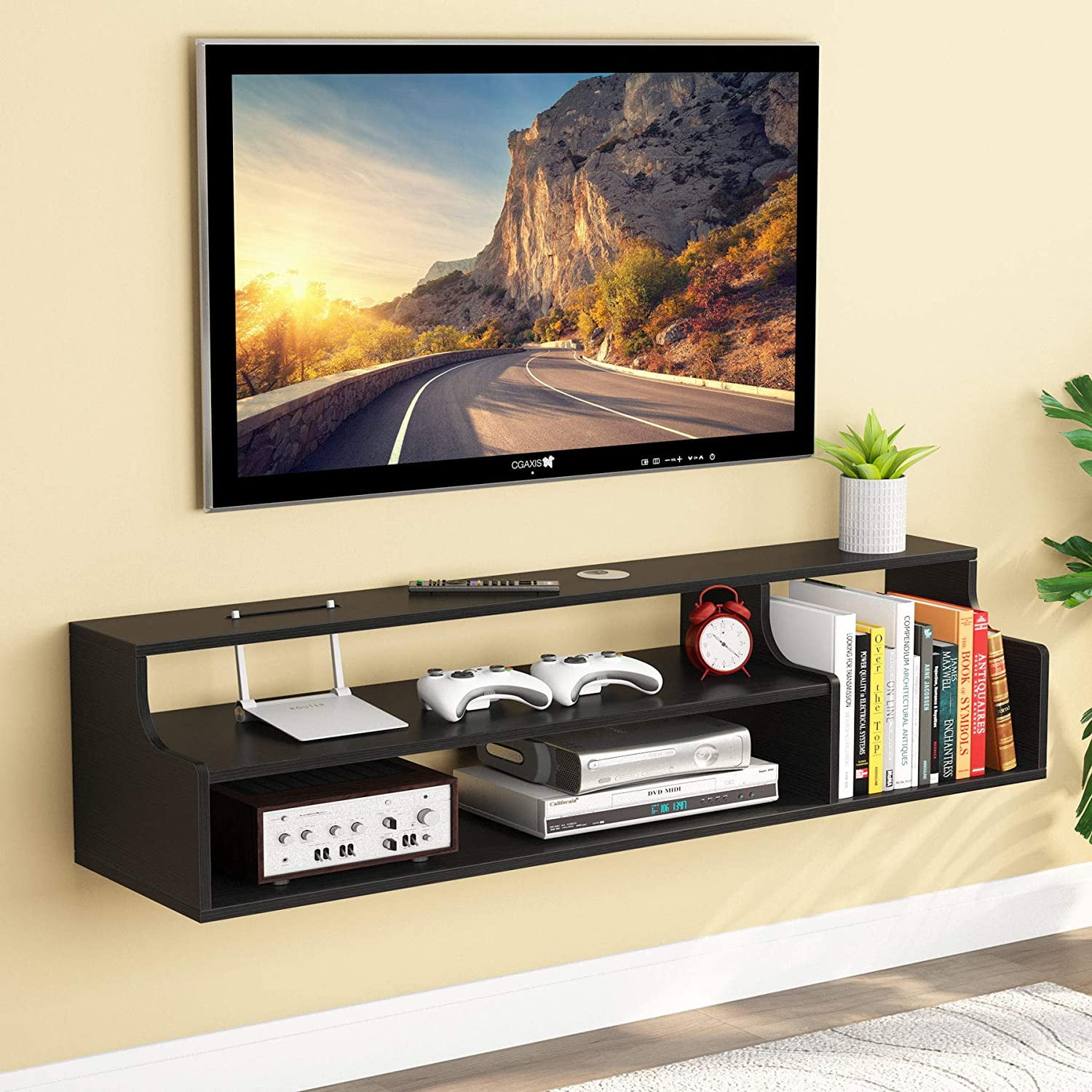

I am talking about the width of the flat back that sits against the wall. More places to anchor to the wall, equals more strength. This means it will cross as many anchor points as possible on the wall. Ideally your bracket should be 2”-4” shorter than your shelf length, as a rule. First consider length, which is the long dimension of any given floating shelf bracket. Think about sizing two ways: length and width. The name of the game is to have as much steel behind your shelf without it showing. Use a bracket that is sized appropriately to your shelf. Torsional flex is bad in a floating shelf bracket, it means the shelf will sag sooner under load. This helps eliminate twist or torsional flex. Look for back bars at least 1/4” thick, and as wide as fits inside your shelf thickness. Thinner steel bends, thicker steel withstands stress and higher loads. Bracket is constructed of thicker gauges of steel If we use the same example, there should be 4 to 5 rods within a 70” long shelf to adequately support all the weight that could be place on that long of a shelf.Ĥ. Look for brackets that have multiple rods added as the bracket gets longer. More rods equals more strength and 70” is a lot of length to squeeze more rods(strength) into the shelf. It doesn’t make sense to have a bracket with two rods supporting a shelf 70” long. Proper number of rods for your shelf length Using larger diameter rods means you can go deeper. Using smaller rods like 5/8" or 1/2" means you wont be able to go as deep, or hold as much. A 3/4” diameter rod will handle both with ease. Typical shelf depths are 12” for kitchen, 10” for living room/bookshelves. Typically, a 3/4” diameter rod is more than enough to handle most real life situations like say, 12” deep shelves with dishes or books on them. In fact, they inspired us to design a better solution, which is why we know what we know.Ģ.

Both are major deal breakers for us and we have avoided these types of floating shelf brackets at all costs from the beginning.

In our experience using any of these versions consistently left wiggle within the finished shelf and the weight capacity was nowhere near the capacity of a welded version. Brackets that screw or bolt together also are inferior to a solid 360 welded floating shelf brackets. It is a far superior construction method to face welding for both strength as well as ease of use. So, choose wisely.Īt Shelfology we build high strength, super sweet floating shelves every day, and these are the characteristics of a floating shelf bracket we have found to be most useful for performance and installation ease:īrackets with the highest strength have the rods recessed into the flat bar of the bracket and are welded all 360 degrees around it, on the back.
#FLOATING TV SHELF INSTALL#
It also makes your life easier or harder when you build and install your shelf, yourself, and ultimately makes or breaks the entire installation. Specifically, the floating shelf bracket is what gives a floating shelf its ability to perform under stress and over time. Quite literally, everything is hanging on it.

If you are floating a shelf, the most important decision you can make is the choice of floating shelf hardware.


 0 kommentar(er)
0 kommentar(er)
